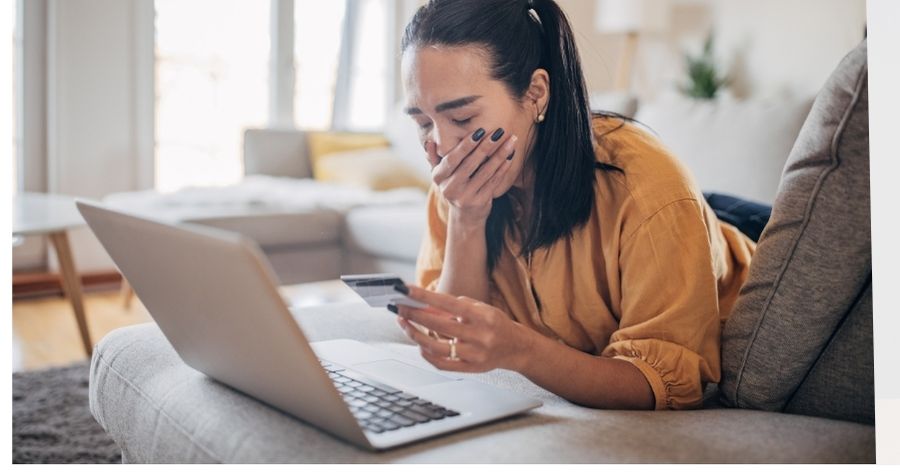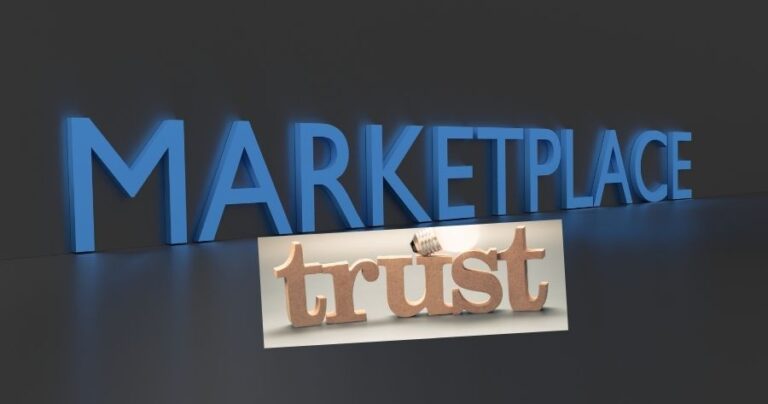
Online marketplaces have revolutionized how people buy and sell items. From household items to electronics, furniture, clothes, and even vehicles, these platforms make it easier than ever to trade. However, with ease comes risk. Fake buyers and sellers lurk on nearly every online marketplace, waiting to scam unsuspecting users. These scammers can operate behind seemingly legit profiles, using emotional manipulation, fraudulent tactics, and pressure to make you let your guard down.
This guide provides a deep, comprehensive understanding of how to identify fake buyers and sellers, prevent scams, and keep your money, goods, and identity safe. Every subheading below unpacks a vital aspect of marketplace safety.

The Rise of Online Marketplace Fraud
Scammers have increasingly flooded online marketplaces as more transactions shift online. From low-cost smartphones on Jiji to high-ticket electronics on eBay, fraudsters target every price range. Marketplaces like Facebook Marketplace, Craigslist, OLX, and Gumtree have reported growing fraud rates yearly. One reason is the ease with which scammers can create fake profiles within seconds, often with stolen photos, vague bios, and no traceable history.
The anonymity of online interactions gives scammers the perfect camouflage. Most marketplaces lack deep identity verification, making it difficult to distinguish real users from fake ones at first glance.
Common Scams in Online Marketplaces
Fake buyers and sellers use specific tactics to trick users. Here are some of the most common:
- Overpayment scams: The buyer offers to pay more than the item price and asks the seller to send back the “extra” money.
- Fake receipts or bank alerts: The scammer sends a Photoshopped receipt or SMS alert as proof of payment, urging you to ship the item.
- Shipping agent scams: A fake buyer may say they’ve sent a courier to pick up the item, but first, you must pay the courier fee.
- Phishing links: Fake sellers or buyers send links to bogus login pages that steal your credentials.
- Ghost listings: Fake sellers list attractive items (like iPhones or PlayStations) for absurdly low prices to lure desperate buyers.
Understanding these patterns is the first step to spotting and avoiding scams.
Immediate Red Flags
Some warning signs should instantly raise suspicion when you’re dealing with buyers:
- No profile photo or identity info: Legitimate buyers usually have a traceable digital footprint. Be suspicious of blank or newly created profiles.
- Too eager to buy: If someone wants to purchase your item without negotiating or asking basic questions, they’re likely not serious.
- Unusual payment methods: Requests to use gift cards, cryptocurrency, or third-party payment platforms you’ve never heard of are red flags.
- Willingness to pay more: Real buyers almost never offer to pay more than the listing price.
- Strange grammar or generic messages: Many scammers operate in bulk and use copy-pasted scripts with obvious grammar issues.
Trust your instincts. If something feels off in the first few messages, back away.
Conversation Patterns of Fake Buyers
Scammers follow predictable scripts. Here’s what to watch for:
- Wants to move off-platform fast: A scammer might say, “Can you send your WhatsApp number?” right away. They want to leave the monitored marketplace chat.
- Gives non-specific responses: When asked, “Which color do you want?” they reply, “Yes, I will buy now.”
- Avoids pick-up or meeting questions: A genuine buyer will confirm a time or place. A fake one dodges these entirely.
- Pushes for trust: They’ll say things like, “Trust me, I’ve done this many times. I’m a serious buyer.”
They try to establish false urgency and a sense of professionalism but avoid real details.
Payment Red Flags
When dealing with money, fake buyers become extra creative. Watch for these signs:
- Fake bank alerts: Many scammers use online tools to create SMS/email receipts that look legit. Always confirm directly with your bank.
- Delayed payment confirmation: A fake buyer may say their bank is “processing” the payment or that “it will reflect soon.”
- Asking for refunds: Some will claim they sent too much and want you to return the balance before the “payment” even clears.
- Strange platforms: Requests to use weird wallets or unfamiliar payment methods should be denied.
Never ship or release an item until you’ve verified payment in your bank account yourself.
Fake Buyer Playbook: The Full Scam Flow
- Initial interest: They message quickly and offer to buy at your price or higher.
- Move to private chat: They push for WhatsApp or SMS to avoid detection.
- Fake proof of payment: They send you a fabricated alert or screenshot.
- Request action: They ask you to ship the item, pay a courier, or refund “extra” cash.
- Ghosting: Once you comply, they vanish, and your money or item is gone.
Knowing this sequence can help you shut the scam down early.
Suspicious Product Listings
Fake sellers bait buyers with irresistible deals. Here’s how to spot their tricks:
- Unrealistic prices: A brand new MacBook listed for ₦50,000? That’s bait.
- Stock photos: They use images from Google or stolen from real listings, not original photos.
- No product details: “iPhone for sale” with no specs, storage, or condition? Be suspicious.
- No negotiation: They insist on the listed price and request payment immediately.
Scammers use urgency and price to override your skepticism.
Profile Red Flags
Investigate the seller’s profile before transacting:
- New account: Created in the last few days with no friends, reviews, or other listings? Probably fake.
- Multiple similar listings: A single seller offering five iPhones, three PS5s, and ten laptops at ridiculous prices? Scam.
- Inconsistent location info: The ad says Lagos, the bio says Abuja, but they want to ship from Enugu.
Fake sellers don’t have time to build real profiles. The details won’t add up.
Communication Behavior
Pay close attention to how a seller communicates:
- Avoids questions: Ask about serial numbers, condition, or video proof, they’ll ignore or deflect.
- Pushes for payment now: They’ll say others are “interested,” or “someone already offered” to rush you.
- No meet-up option: Any excuse not to meet, “travelling,” “too busy,” or “item is in a warehouse” is a danger sign.
Genuine sellers answer questions and respect buyers’ caution. Scammers pressure and dodge.
Fake Seller Scam Blueprint
- Too-good-to-be-true item: Price is lower than market, photos are generic.
- Excuses to avoid meeting: Claims of travel, job change, or distance.
- Immediate payment request: “I’ll ship once you pay now.”
- Fake courier or shipping confirmation: Designed to buy time or fake legitimacy.
- Silence or blocking: Once paid, they disappear.
Never prepay for unverified sellers, no matter how “urgent” they seem.
Reverse Image Search
Right-click the image and search with Google or TinEye. If it appears in dozens of unrelated ads or foreign websites, it’s stolen. Scammers rarely have their own pictures, they steal from the internet or legitimate listings.
Always request new pictures with a timestamp or personal item in the frame (like their hand or a coin) if you’re unsure.
Check Profile Consistency
Review everything:
- Is the name on their chat profile the same as on the listing?
- Does their grammar match their claimed nationality?
- Do their other listings match the type of product being sold?
Inconsistencies, even small ones, can point to deception.
Ask for a Video Call or Live Proof
You can say: “Please send a quick video showing the item and today’s date.”
For high-ticket items, request a short video call to confirm they actually possess the product. Scammers will refuse, delay, or make excuses.
Use Platform Features
- Use in-app messaging, not WhatsApp or SMS.
- Enable buyer/seller reviews when available.
- Report and block suspicious accounts, this helps protect others.
- Stick to payment options with fraud protection (PayPal, escrow services, etc.)
Never bypass the platform’s safety mechanisms just to “make things faster.”
Facebook Marketplace
- Avoid new accounts with no visible activity.
- Check mutual friends, fake profiles usually have none.
- Beware of foreign-sounding names using Nigerian locations.
- Don’t click on any links they send, especially shortened URLs.
Facebook scammers often bait with attractive pricing, then move fast to close deals.
Jiji, OLX & Similar Platforms
- Use Jiji’s “Buy Now” or “Jiji Delivery” features when possible ,they include protection.
- Do not pay a seller before seeing the item.
- Ask for proof of identity (ID card) or registration if buying something valuable.
- Cross-check their phone number using apps like Truecaller or WhatsApp profile photos.
Craigslist
- Never ship or accept shipping, meet only in public.
- Avoid cheques, money orders, or Venmo with strangers.
- Insist on in-person exchange for cash only.
- Report suspicious posts to Craigslist admins.
Craigslist is popular for item listings but highly exploited by scammers.
Global Platforms (eBay, Amazon Marketplace)
- Use buyer protection programs. Don’t pay off-platform.
- Avoid sellers who request “bank transfer” instead of PayPal or card payment.
- Check seller reviews and return policies.
- If a deal feels too good, research thoroughly before paying.
These platforms offer tools to stay safe but only if you use them.
Creating Urgency
Scammers push you to act fast so you skip safety steps:
“Others are messaging me now.”
“I’m traveling today, pay now or lose it.”
“This is the last one I have.”
Slow down. The minute you’re being rushed, it’s a tactic.
Flattery and Manipulation
Scammers will butter you up:
“You sound like a good person.”
“I trust you because you’re honest.”
“I’m giving you a discount because I like your vibe.”
They weaponize kindness to lower your defenses.
Making You Feel Guilty
Once you hesitate, they try guilt:
“So you don’t trust me?”
“I’m just trying to sell honestly.”
“You’re wasting my time.”
It’s emotional blackmail. Walk away.
For Sellers
- Never accept payment screenshots as proof.
- Meet in safe public places not your home.
- Avoid sending OTPs, account details, or personal ID.
- Use cash or verified bank transfers only.
For Buyers
- Never prepay. Pay only on delivery or inspection.
- Inspect items thoroughly, especially electronics.
- Request receipts or proof of purchase.
- Record the meeting when dealing with high-value items.
Stop Communication Immediately
The moment something feels off, stop engaging. Don’t try to “catch” the scammer, you’re not the police.
Report to the Platform
Use the “Report” or “Block” function. Most platforms log reports and act against flagged accounts.
Report to Local Authorities
- Contact your local police station with evidence
Notify Your Bank
If you’ve sent money to a scammer:
- Contact your bank immediately
- Provide transaction details
- Ask for a temporary reversal if applicable
Act quickly. Time is critical.
Fake Buyer – The Overpayment Scam
A fake buyer agrees to pay ₦150,000 for your item. They then send a fake alert for ₦200,000, claiming the ₦50,000 is for shipping.
They beg you to send ₦50,000 to the “courier.” You send the cash, then realize the bank alert was fake.
Fake Seller – Ghost Product
You see a brand-new Samsung phone listed for ₦60,000. The seller refuses to meet, citing “security concerns,” and insists you pay upfront.
You send the money. They block you. The listing disappears. Scam complete.
Always Trust Your Instincts
If it feels too easy, too fast, or too weird, it’s likely a scam.
Stay Updated
Read safety tips posted by the marketplace. Join online forums. Follow tech and fraud alert accounts on social media.
Educate Friends and Family
New users are most vulnerable. Talk to your parents, friends, or siblings. Share guides like this to protect others.
Conclusion
Online marketplaces are powerful tools but they’re also risky. By learning how to spot fake buyers and sellers, you can trade confidently and safely. Stay cautious, verify everything, and never prioritize speed over safety.





